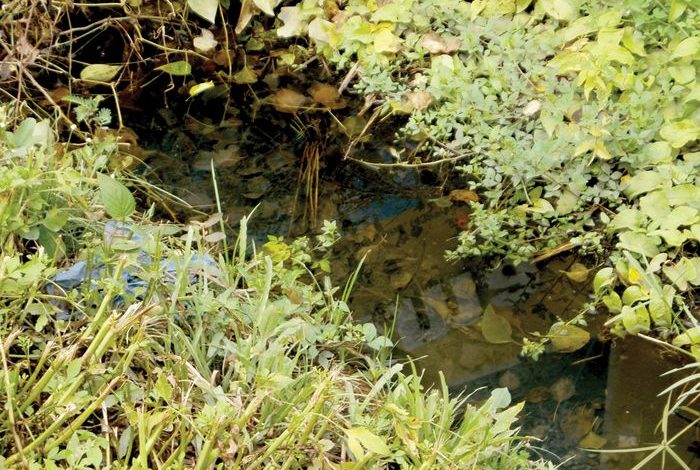

Cover Story
By A. Jeyaraj
Perak has seen nine dengue related deaths as of September 27 this year compared to only one death during the whole of 2013 while the number of dengue cases this year is 4102 compared to 1359 cases in 2013, an increase of 201.8 per cent during the same period. Dato’ Dr Mah Hang Soon, Chairman, Perak State Health Committee said that dengue cases peak twice a year and this year it peaked during the beginning of the year with 250 cases reported in a week and a smaller second peak was in the middle of the year. There are fewer new cases being reported now. But does this mean that the battle with Dengue is being won? Not likely, unless EVERYONE joins in the battle.




“Just 10 minutes” to check for breeding grounds if everyone co-operates
From the data gathered over the past five years, the baseline for Dengue is about 1000 cases per year. However, the current statistics are now alarming.
Nationwide, Datuk Seri Dr S. Subramaniam, Minister of Health informed that the number of deaths reported as of September 30 is 149 compared with 48 deaths during the same period last year. The number of cases increased to 77,527 compared to 23,099 during the same period last year.
Dr Mah said that the state government has set up a high-level committee which is co-chaired by himself and the State Secretary Datuk Seri Abdul Puhat Mat Nayan to tackle the dengue menace. He added that property owners whose premises are found to be breeding Aedes mosquitoes are being fined RM500. He said the compound must be paid in full and the state government would not give a discount on the fine even upon appeal by the offenders.
The committee has regular meetings with MBI, Land Office, Public Works Department, Department of Safety and Occupational Health and other agencies and requests them to carry out regular inspections and clean-up work. As 50 per cent of mosquito breeding is on vacant land and rubbish dumps, the Land Office has been instructed to take action against owners who do not maintain their land.






Dengue Fever
Dengue fever was first recorded in Malaysia (Malaya) in 1902, but the more severe form of the infection, dengue haemorrhagic fever was only described in late 1950s. The first documented outbreak occurred in Penang in 1962. Over the last three decades, the number of dengue cases has increased exponentially reaching nearly 80,000 cases to date this year.
Dengue is a viral infection transmitted by the bite of an infected female Aedes mosquito. There are four distinct serotypes of the dengue virus and all four are present in this country. A fifth is supposed to have been discovered in Sarawak recently. Symptoms appear in 3 to 14 days (average 4 to 7 days) after the infective bite. Dengue fever is a flu-like illness that affects infants, young children and adults.
The characteristic symptoms of dengue are sudden onset of high fever, shivering, headache (typically located behind the eyes), muscle and joint pains, vomiting, purging, red spots on skin and bleeding.


Dengue virus is the most serious mosquito borne public health threat in the tropics. It is not a single virus and has no animal model. There is no specific treatment or licensed vaccine at present. Vaccines are being developed and are in various stages of clinical trials.
Severe dengue is a potentially lethal complication but early clinical diagnosis and careful clinical management by experienced physicians and nurses can save lives. People with symptoms of dengue fever must seek medical treatment immediately. Complications occur when patients seek medical help at a late stage. With modern equipment dengue fever can be detected fast.
Most people with dengue recover without any on-going problems. The fatality rate is 1-5 per cent, and less than 1 per cent with adequate treatment. It was recently reported in the media that Datuk Dr Noor Hisham Abdullah, Health Director General has said that papaya leaf extract accelerates recovery process of dengue patients.
Habitats of Aedes Mosquito
Aedes mosquitoes mostly breed in artificial habitats rather than natural habitats in urban areas. The best way to reduce mosquito breeding is to clear away the places where the mosquito lays eggs, like containers, that hold water inside and around the house, metal/plastic drums, water storage vessels, flower pots, discarded plastic containers, used car tyres and items that collect rainwater. About half of the breeding areas are rubbish dumps that are wet and bushy vacant land where water can collect. Urbanisation is increasing the habitats for mosquitoes to breed.
Control Measures
The Vector Control Unit in MBI carries out the following regularly to combat dengue.
- Fogging – The State Health Department informs the Unit on places where dengue cases have been found and fogging is carried out in these places and nearby residents are informed of the case and requested to take care.
- Gotong Royong programmes are organised at dengue hot spots.
- Carrying out aedes inspection and identifying larvae breeding places and destroying by larviciding.
- Enforcement Officers go around and inspect premises and summon owners whose premises are breeding mosquitoes.
- Investigation of dengue fever cases and providing counselling.


New Approaches in Controlling Mosquitoes
The following new methods are being tested to control Aedes mosquitos. There are pros and cons for each method.
- Open Field Release of Genetically Engineered Sterile Mosquitoes. Large numbers of sterile male Aedes aegypti mosquitoes are released into the environment to mate with the wild female Aedes aegypti mosquitoes. The progeny of this type of mating die as late larvae or pupae. This mating eventually reduces the ability to reproduce among these mosquitos and leads to a minimised number of Aedes aegypti. This technique is practised in Brazil and an experiment was conducted in Bentong, Pahang. Due to opposition from the public this method is not used in Malaysia.
- Life Shortening Wolbachia Infection on Aedes aegypti when their lifespan was halved with the introduction of the Wolbachia pipientis, eMeiPop infection under laboratory conditions.
- Melaleuca Cajuputi Essential Oil in aerosol spray cans was used against Aedes aegypti in an experiment conducted at a low cost flat in Setapak, KL. It was found that Aedes Aegypti is seen to be more susceptible towards essential oil extracts.
Recommendations by State Health Department
- On a weekly basis every individual must search and destroy breeding grounds of mosquitoes around their surroundings.
- Aedes mosquitoes are active between 5am and 7am and between 5pm and 7pm. The public are requested to reduce outdoor activities during this period and wear long sleeve shirts and long pants and apply repellent.
- Spray aerosol within the house during these periods.
- Ensure MBI workers collect household garbage at least thrice weekly and carry out cleaning activities.
- MBI must also carry out additional cleaning activities together with other agencies especially in hot spots.
- Every individual must take responsibility for cleanliness and not throw rubbish indiscriminately.
It is not possible to destroy all the mosquitoes. What we can do is control the breeding grounds and reduce the mosquito population. This is the responsibility of everyone. For the time being fogging is the best method to control Dengue. Alternative strategies are required.
“JUST 10 MINUTES”, check your home and destroy breeding places of Aedes. Dengue Can Be Fatal.
Next issue: Mosquito repellents – The Good, The Bad and The Ugly.


